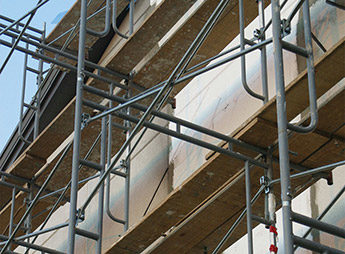Law and liability
A new study stirs up debate over New York state’s ‘Scaffold Law’

Can a law intended to protect worker safety have the opposite effect and lead to more injuries?
It can for one law in New York state, according to a study issued Feb. 19 by the Nelson A. Rockefeller Institute of Government – the public policy research arm of the State University of New York.
Labor Law 240 – commonly referred to as the “Scaffold Law” – has been interpreted to impose absolute liability on employers for workplace injuries that occurred at height, meaning workers injured on the job in certain situations have the right to sue their employer.
All similar laws in other states have been repealed, according to the study, which was funded by the nonprofit organization New York Civil Justice Institute.
Researchers from SUNY’s University at Albany and Cornell University determined that New York experiences an additional 677 workplace incidents a year as a result of the Scaffold Law. They compared New York’s fatal and nonfatal construction injury rates with those of Illinois, which repealed its scaffold law in 1995. Data showed that before the law was repealed, Illinois had a higher rate of injuries and fatal falls than New York. However, after the law was taken off the books, Illinois’ rates became lower than New York’s rates.
Researchers concluded that the New York law’s strict liability drives up construction costs and diverts millions of dollars of public money to lawsuits, legal costs and insurance. Combined with other costs, such as workers’ compensation payments and medical costs, the law is estimated to cause the state to pay as much as $3 billion annually, according to the study.
“If the Scaffold Law causes injuries and costs our economy $3 billion a year, why are we the only state to have it?” Tom Stebbins said in a New York Civil Justice Institute press release. Stebbins is the executive director of the Lawsuit Reform Alliance of New York, which is part of a group working to change the Scaffold Law. “We cannot waste public money on a law that makes worksites more dangerous. It defies all common sense,” he added.
Critics weigh in
The study has been the target of intense criticism from other researchers. Richard Hurd, a professor of labor studies at Cornell University’s Industrial and Labor Relations School, said the study’s methodology is obscure, its statistical techniques are not fully explained and it fails to take certain things into account.
For example, when comparing New York construction injury rates to other industries in the state or to other states’ construction injury rates, the study does not control for the New York construction industry’s union density, which Hurd said is higher than other industries or other states’ construction industries. He said injuries on a unionized worksite are more likely to be reported than on a non-unionized worksite, so it makes sense that more injuries are reported at New York worksites because of this high union density.
“It seemed to me that they were more narrow in their focus, and not careful or considering what other factors might be in play,” Hurd said.
Jeff Grabelsky, an associate director of the Worker Institute at Cornell University, also questioned the study’s conclusions. “The notion that by reducing the liability that employers bear, somehow safety goes up, just seems so counterintuitive,” he said. “Why in the world would that be the case?”
As Grabelsky explained, the law puts the responsibility for maintaining a safe workplace on employers or others who control a worksite. He suggested that the New York law increases the likelihood that employers will create a safe workplace because they are liable for worker injuries.
The study and several groups have suggested that repealing the law could lead to cost benefits and a safer worksite. But Grabelsky urged caution, noting that “before we do anything precipitous, we should know what the risks are in that action, and the decision should be well-informed.”
Post a comment to this article
Safety+Health welcomes comments that promote respectful dialogue. Please stay on topic. Comments that contain personal attacks, profanity or abusive language – or those aggressively promoting products or services – will be removed. We reserve the right to determine which comments violate our comment policy. (Anonymous comments are welcome; merely skip the “name” field in the comment box. An email address is required but will not be included with your comment.)

